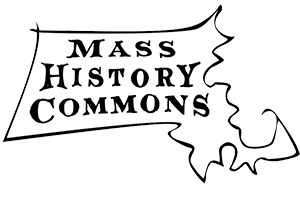Erik Holmgren, Manager of Advancement and Strategic Partnerships; Amy Chu, Program Officer; and Käthe Swaback, Program Officer

Founded in 1994, YouthReach is the longest continually running support program for Creative Youth Development (CYD) work in the United States. This Mass Cultural Council program has invested more than $22.4 million across more than 100 organizations in its 30-year history.
This year (FY25), the program will once again grant a total of $1,870,000 to 85 CYD programs that are primarily out-of-school time programs with a small cohort of in-school music programs. All focus on infusing youth development with creative experiences in the arts, humanities, and interpretive sciences.
Using data reported to Mass Cultural Council by these 85 YouthReach grant recipients about last year, the Agency has released Create, Connect, Catalyze: YouthReach in FY24, a report summarizing the participation, demographics, challenges, and successes these organizations encountered between July 1, 2023, and June 30, 2024. It also compares the findings to organizational reporting of previous years. It contains quotes, photos, and contextual information provided by the programs. The following is a summary of each area of the report.
YouthReach Participants
The number of participating youth has continued to rebound since the COVID-19 pandemic began with 16,484 youth participating across 85 programs. This is up from just 8,780 in FY22.
Of the participating youth:
- Approximately 82% identify as BIPOC (Black, Indigenous, and People of Color)
- 55% identify as female
- 39% identify as male
- 2% identify as non-binary/genderqueer/third gender
Of participating seniors:
- 93% graduated high school
- 77% plan to attend college, a technical school, or join the military next year
Needs and Risk Factors
“We have seen mental health needs rise among young people in our community since the COVID pandemic; and food insecurity and housing insecurity continue to be critically pressing issues faced across our city. We have contracted with a trained social worker who has vast experience working with young people in Chelsea to offer our team support and guidance as we navigate these challenges.” – Green Roots
Each year, organizations are asked to identify the greatest issues that their organization needed to take to address. Many of these findings have been consistent over the last several years, but the increase in the top identified challenge – mental health – again illustrates the dire mental health challenges young people are facing. The top challenges identified by programs in FY24 include:
- 89% Mental Health
- 64% Transportation
- 54% Recruitment
- 40% Food Insecurity
- 39% Staff retention
- 28% Technology
- 26% Housing Insecurity

Accomplishments
“Roots Rising has had an impact on my life. I learned responsibility, how to be more independent, and also that I don’t have to go through hard things alone.” – Youth participant (After working at Roots Rising in 2023: 97% of the young people in “Youth Crew” felt less sad, anxious or lonely. 94% had more pride in their community. 84% reported that they had a stronger work ethic and 100% felt more prepared for the workforce.)
Despite the challenges facing young people and CYD programs, organizations were asked to identify their accomplishments in FY24 using the nationally adopted framework for Creative Youth Development: Create, Connect, Catalyze. Organizations accomplishments included working with youth to:
- Create – They helped participants to strengthen their artistic voice; express themselves and their personal and collective concerns; and supported them in having access to high quality creative experiences.
- Connect – They helped participants co-create brave spaces for self-discovery, discover their identities through the creative process, and engage with community members and others.
- Catalyze – They helped participants organize and design events, cultivate leadership, and advocate for change.
Recommendations
“In last year’s report, we wrote about the intense mental health struggles we were witnessing in our teenagers post-Covid (increased anxiety, self-harm, and addiction to social media) and how/why we believed they were negatively impacting recruitment. Unfortunately, we have not yet seen marked improvement in those trends, but we HAVE been better able to address mental health for long-term participants. We value the depth of our programs (that is, working with a fairly small core of youth over several years rather than a large and rotating number each year), and when teaching artists have strong familiarity with a young person, it naturally translates to providing better supports.” – Actors’ Shakespeare Project

To further support CYD programs and youth, the recommendations from the report to meet the needs in the field include:
- Supporting partnerships and trainings with behavioral and mental health providers to address issues of social isolation, loneliness, and mental health challenges.
- Funding cross sector networks to create community, knowledge, and support.
- Development of platforms/tools/strategies to support professional development, leadership pathways, and incentives to keep staff engaged and address retention issues.
- Supporting organizations to document and communicate the measurable impact (including in well-being) they are having in the lives of young people and communities.
